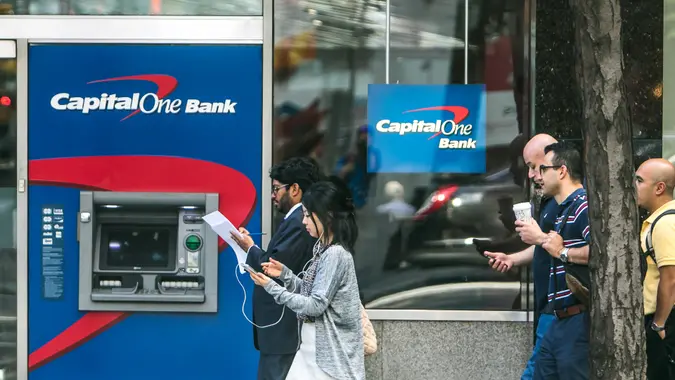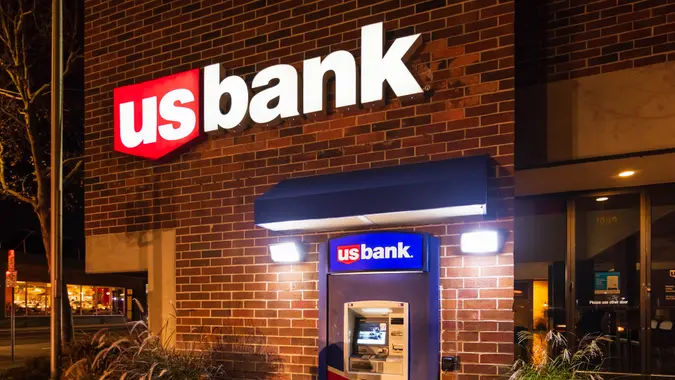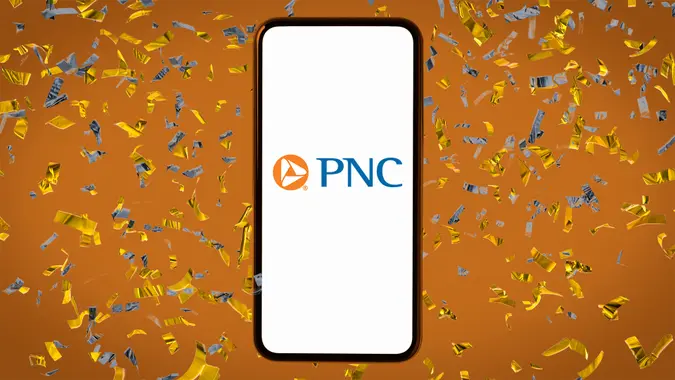Should You Have More Than One High-Yield Savings Account?

Commitment to Our Readers
GOBankingRates' editorial team is committed to bringing you unbiased reviews and information. We use data-driven methodologies to evaluate financial products and services - our reviews and ratings are not influenced by advertisers. You can read more about our editorial guidelines and our products and services review methodology.

20 Years
Helping You Live Richer

Reviewed
by Experts

Trusted by
Millions of Readers
High-yield savings accounts are known for their higher interest rates compared to traditional accounts, providing a powerful tool for enhancing your savings growth. If you’re crafting an effective savings strategy, you might wonder: Should I have more than one high-yield savings account? Keep reading to explore how integrating multiple accounts could complement and strengthen your overall savings approach.
Should You Have More Than One High-Yield Savings Account?
Yes, having more than one high-yield savings account can be beneficial for several reasons. Diversifying your savings into multiple accounts can help you manage your finances better, meet different savings goals and potentially maximize FDIC insurance coverage. Here are some key takeaways to know:
- Different goals, different accounts: Using separate accounts for distinct savings goals — emergency fund, vacation, big purchase — can make it easier to track your progress and stay organized.
- Maximize FDIC coverage: The FDIC insures deposits up to $250,000 per depositor, per insured bank, for each account ownership category. Multiple accounts at different banks can increase your total coverage.
- Take advantage of various features: Different high-yield savings accounts offer unique features and benefits. By having more than one account, you can leverage these diverse offerings to suit your specific needs.
- Interest rate shopping: Banks periodically change their interest rates. Having multiple accounts allows you to shift your savings to the account offering the best rate at any given time.
- Risk mitigation: In the unlikely event of technical issues or restrictions at one bank, having your funds spread across multiple accounts ensures you still have access to your money.
Factors To Consider
While there are advantages, managing multiple accounts requires some consideration.
Avoid Fees
When opening bank accounts, it’s essential to check for any associated fees. Some accounts might have maintenance fees or require a minimum balance, which could offset the advantages of higher interest rates. Carefully read the terms and conditions of each account to ensure that potential fees don’t erode your earnings.
Stay Organized
Managing several accounts demands a high level of organization. Keep detailed records of each account, including account numbers, balance requirements and interest rates. Staying organized will help prevent any confusion or overlap, ensuring you can easily track your savings progress and account performance.
Interest Rates
Regularly monitoring the interest rates of your high-yield savings accounts is crucial to maximize your savings potential. Interest rates can fluctuate, so compare them periodically with the market rates to ensure they remain competitive. Switching accounts or redistributing funds might be necessary to optimize your savings if rates change significantly.
Finding the Best High-Yield Savings Account
When looking for the best high-yield savings account, consider factors like the following:
- Interest rate
- Fees
- Minimum balance requirements
- Ease of access
- Customer service
Research and compare different banks to find an account that aligns with your financial situation and goals.
Good To Know
While high-yield savings accounts are a popular choice for growing your savings, don’t overlook the potential of checking accounts and certificate of deposit accounts as complementary tools.
Checking accounts, especially those offering interest, can provide easy access to funds with the added benefit of earning.
CD accounts can offer higher interest rates for longer-term savings, locking in a rate for a set period and potentially yielding more than a standard savings account.
Balancing your funds across these different account types can create a more robust and flexible financial strategy.
Final Take
Having more than one high-yield savings account can be a strategic move for savvy savers. It allows for goal-specific saving, maximizes insurance coverage and enables you to benefit from the best available interest rates. However, it’s important to weigh the administrative aspect of managing multiple accounts and continually assess whether each account is meeting your financial needs effectively.
FAQ
Here are the answers to some of the most frequently asked questions regarding high-yield savings accounts.- How much should you keep in a high-yield savings account?
- The amount to keep in a high-yield savings account depends on your personal financial goals and needs. Commonly, these accounts are used for emergency funds, which typically cover 3-6 months of living expenses, or for specific short-term savings goals. Ensure that you adhere to any minimum balance requirements to avoid fees and maximize interest earnings.
- Is there a downside to opening multiple savings accounts?
- Here are some of the downsides to opening multiple savings accounts:
- The complexity of managing multiple accounts.
- Risk of incurring fees if minimum balance requirements are not met.
- Losing your focus on your financial goals.
- It's crucial to regularly monitor each account and ensure that they align with your overall financial strategy.
- Here are some of the downsides to opening multiple savings accounts:
- What is the downside of a high-yield savings account?
- The downsides of a high-yield savings account can include higher minimum balance requirements, potential monthly maintenance fees and limited transaction abilities compared to regular savings accounts. Additionally, the interest rates on high-yield savings accounts are variable and can change with market conditions, which means the rate might decrease over time.
Editor's note: This article was produced via automated technology and then fine-tuned and verified for accuracy by a member of GOBankingRates' editorial team.
 Written by
Written by  Edited by
Edited by 




























